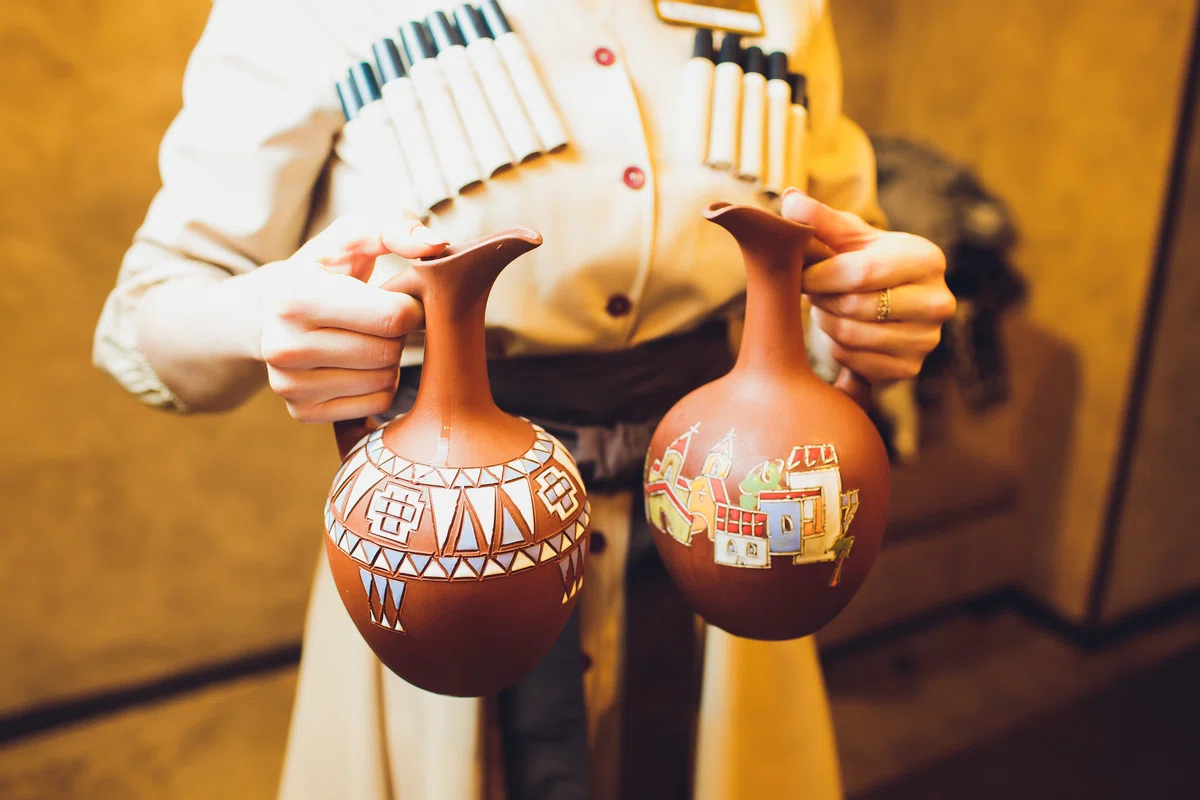
Winemaking as a way of life in Georgia: varieties, tasting and cooking methods from the best winemakers.
An article on madloba tells about the best wines of Georgia, who and where prepares them and how to make them at home. In Georgia, wine is divided into categories based on the composition of the land where grapes grow and the sugar content in the finished product. Our guidebooks say where you can taste for free.
Find out all about Georgian wine⬇️
Who hasn't heard of georgian wine? Probably, such people simply do not exist. Many people go to Georgia not only to relax by the sea or in the mountains, but also to get to know the national Georgian cuisine and taste real Georgian wine.
Winemaking in Georgia is not just an industry, or even an art, but rather a way of life. The country is recognized as the birthplace of grape cultivation and winemaking. Archaeologists have found traces of vines and vessels with grape seeds here. The finds date back to the IX-X centuries BC.
Now more than 500 types of grapes are grown in the country, all of them are local, and not imported from other countries. They are famous for their long - standing traditions of winemaking Kakheti, Imereti, Kartli, Racha-Lechkhum regions.
There are varieties that are most suitable for making wines, including:
- red: saperavi, alexandrouli, mujuretuli;
- white: rkatsiteli, mtsvane, tsitska and others.
Cooking methods
The taste of the finished product is affected by the method of manufacture. Local winemakers use technologies used in Europe, as well as their own, named after the main regions of growing and processing grapes: Kakheti, Racha-Lechkhum, Imereti.
European technology.
Since ancient times in Italy, Greece and other southern countries, harvested grapes were collected in large wooden vats or baths and crushed with bare feet. Harvesting and receiving the first grape juice turned into a big holiday.
Presses were not used because they could crush grape seeds and spoil the taste of wine.
The juice in its pure form was poured into prepared containers, which were stored in special rooms for fermentation and infusion. If it was planned to make red wine, then the juice was taken together with the berry skin. In the manufacture of white — the juice was filtered.
But wine made in the European way turns out differently in Georgia. The aging and fermentation conditions are different. And most importantly, many grape varieties are grown only here. Among such wines can be called "Tsinandali", "Napareuli", "Manavi", "Gurjaani".
Imeretian and Kakhetian technologies.
The entire mass obtained under the pressure of grapes (juice, twigs, bones) is poured into special, known since ancient times, kvevri jugs, which are previously buried in the ground. There are no large temperature differences in them and therefore a constant temperature of about 14-15 ° C is maintained.
There are slight differences in the further process of making the drink.
According to the Kakhetian method, the juice together with the cake is left for fermentation for 3-4 months. During this time, the substances contained in the bones, small shoots and branches pass into the resulting wine. They give the drink astringency and saturation. Then the resulting wine is decanted and left in special rooms for infusion.
Wines prepared in Imeretian style have a slight acidity and astringency. Small twigs are removed from the juice, skins and bones are left, and kept for 1.5–2 months. In this way, "Tbilisi", "Dimi", etc. are obtained.
There is also a Racha-Lechkhum variant of making wine. The climate here is cooler than in Kakheti and Imereti, so the temperature at which the fermentation of grape must takes place is lower — about 5 ° C, which is why more sugar is stored. It turns out a wine saturated with carbon dioxide, semi-sweet. In this way, well-known wines are obtained: "Kindzmarauli", "Khvanchkara", "Pirosmani", "Ocaleshi" and others.
Usually Georgian wine is named after the name of the village in which the grapes grew.
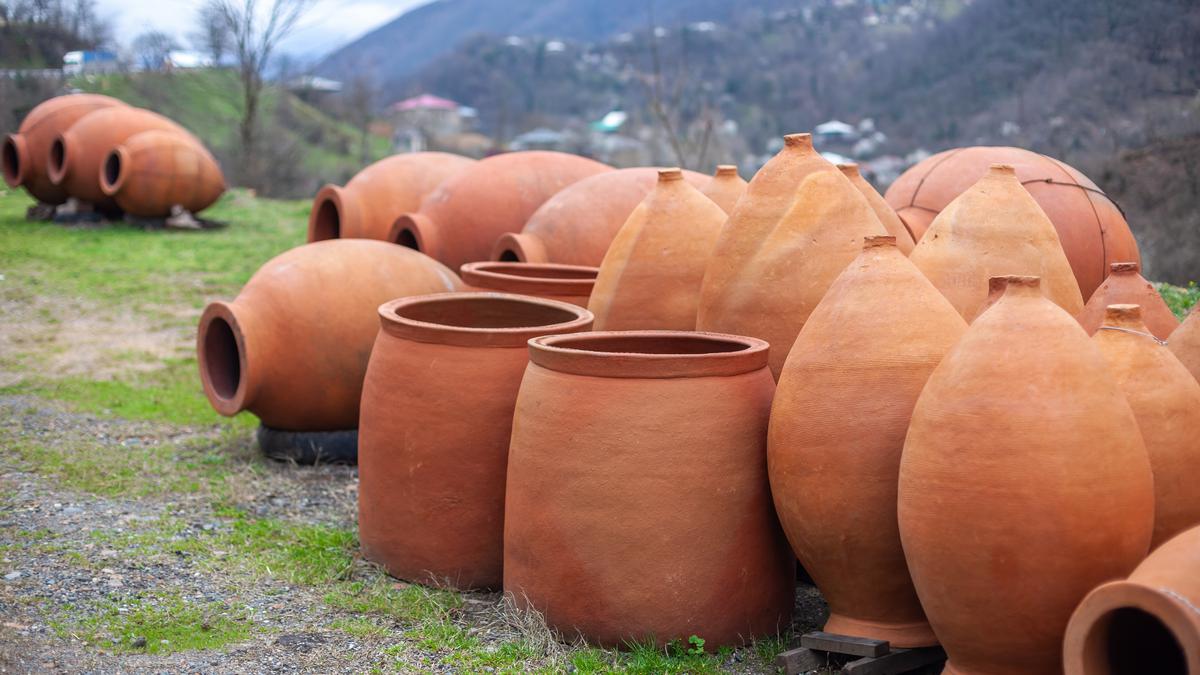
Names and descriptions of Georgian wines
In Georgia, wine is divided into categories without such complex requirements as in France, Italy and some other countries. It takes into account the composition of the land where the grapes grow, the exact compliance with the requirements for the technological process, the sugar content in the finished product and much more.
Semi-sweet red wines
«Kindzmarauli» It is made from Saperavi grapes grown in the Kakheti region of Kindzmarauli. The peculiarity of the finished wine is that cilantro grows here next to the vine. The sugar content of raw materials should be at least 22%, which is facilitated by minerals contained in the soil. This wine is often compared to "Khvanchkara" from Racha. The finished drink has a delicate taste and dark cherry color.
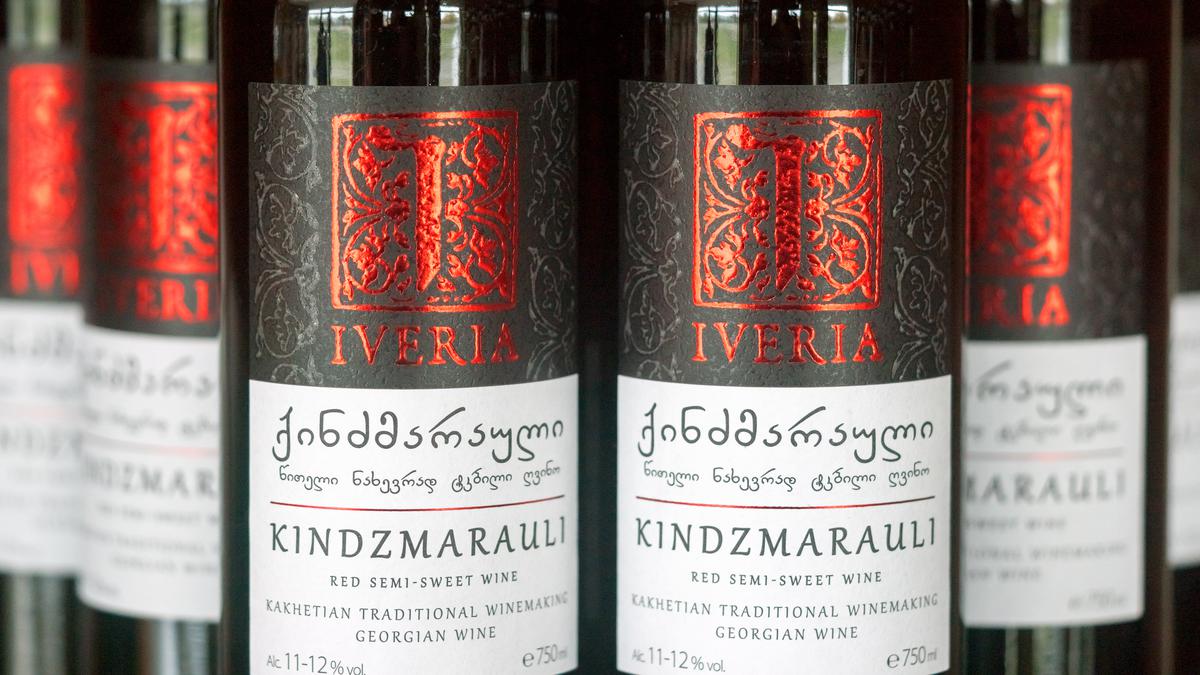
"Alazani Valley" is prepared in kvevri using traditional technologies from varieties grown in the valley of the same name in Kakheti: Alexandrouli, Mujuretuli, Saperavi. Under this name, a low-quality drink is quite often found in Russian stores under this name. In Georgia itself, it is not particularly appreciated, but the real wine “Alazani Valley" has a harmonious, quite pleasant taste. They are made both red and white wine.
"Khvanchkara" is the Georgians' favorite wine, which is made from rare grapes: Alexandrouli and Mujuretuli. It is grown only in the vicinity of the city of Ambrolauri, near the village of Khvanchkara. The finished drink retains its natural sweetness, notes of berries, nuts and fruits are felt.
It is produced in small quantities and is quite expensive. It was him that Joseph Stalin loved most of all.
"Ocaleshi" is a wine from the grape variety of the same name, growing in Megrelia. It has been made since 1933 and is often used as a stand-in for "Khvanchkary". The drink has a fruity taste and a dark ruby color.
"Usakhelouri". A unique grape variety of the same name grows in a limited area in Racha-Lechkhumi. The name comes from the village of Usakhelo. The drink has a pleasant sweetness, a delicate taste with notes of strawberries and a unique piquancy. Among the important characteristics, there is a long-lasting aroma, and this is a sign of premium wine. About a thousand bottles are produced per year, so it is rare and quite expensive to sell.
Dry red wines
Saperavi. The drink from the berry variety of the same name has a very dark garnet color, the Georgians call it black. The taste is a little tart, with notes of red berries and plums. Rarely used in feasts — drunk in large quantities, it increases the pressure. Sometimes there is a semi-sweet, semi-dry and dessert Saperavi.
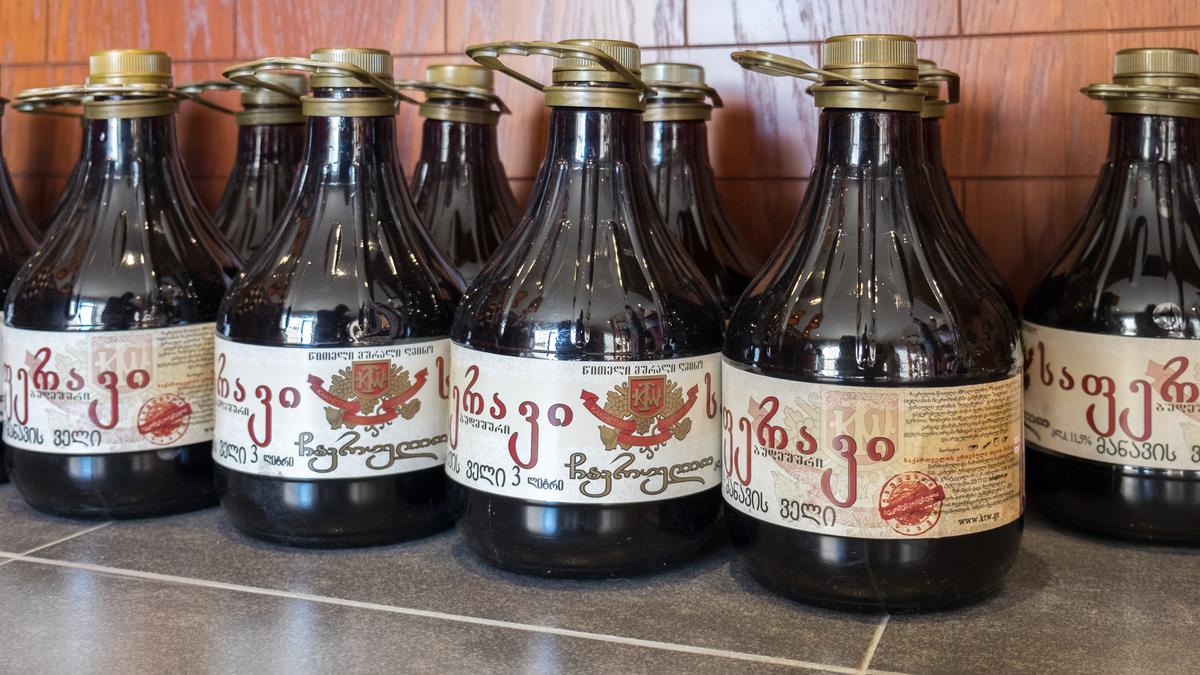
"Mukuzani" — the name is associated with a village in the vicinity of which Saperavi grapes are cultivated. It has been produced in Georgia since 1888 by the European method. Despite the fact that it is aged until ready in oak barrels for about three years, it is not considered vintage. Georgians love him very much.
"Napareuli" — can be both red and white. It is compared with "Mukuzani", because not only the same variety of berries is used for the production of this wine, but also the place of growth of the grapes from which it is made is located near the village of Mukuzani. But the manufacturing technology is different. The wine is aged in oak containers for about two years. This drink is distinguished by a rich flavor bouquet: notes of the taste of cherry seeds are combined with the aroma of black currant and hints of plum. All this is very harmoniously combined. The color of the wine is rich garnet.
Vintage "Kvareli" is prepared in kvevri from the Saperavi berry variety grown near the village of Kvareli. Aging in oak barrels is at least three years, so the finished drink has a slight sourness and a long aftertaste.
White wines
"Tsinandali" is a dry wine, the "author" of which is considered to be V. Chavchavadze. He began producing "Tsinandali" in the European way in 1814. As is customary in Georgia, the name is associated with the village where this drink was first prepared. Local grape varieties Mtsvane and Rkatsiteli are used for its production. It is aged for about three years in oak barrels until ready. "Tsinandali" has a light fruity aroma and a slight sourness.
"Rkatsiteli" is dry and slightly tart, one of the most popular white wines in Georgia. Its basis is the grape variety of the same name, which is grown throughout the country. "Red twig" is translated from the Georgian language, and grapes and a drink from it are white.
The Georgians have a saying that a drop of nicotine kills a horse, and the Rkatsiteli revives.
"Kisi" is a dry, sometimes semi—sweet, from a rare grape of the same name. It is produced only at three wineries in the country and according to local ancient technologies, and according to European ones. It is often called unique and considered very tasty.
"Krahuna" is produced in the European way from a very rare grape variety grown in Imereti. It has a white-golden color and a pleasant taste, dominated by notes of fruit.
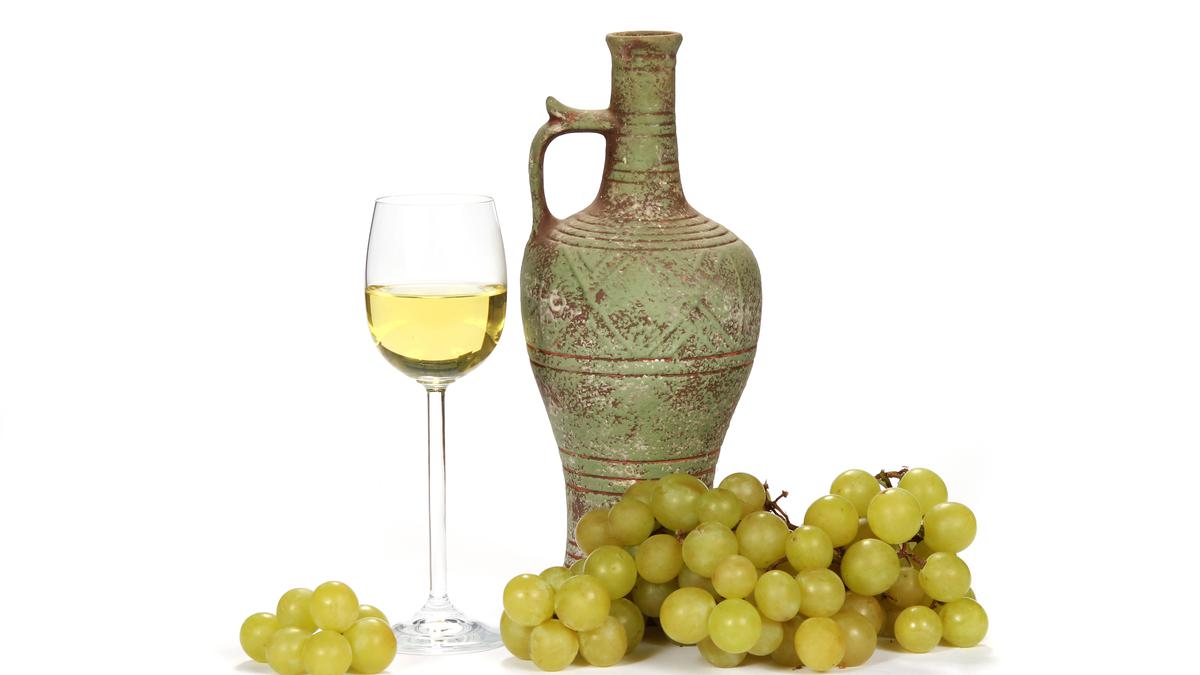
Semi-sweet "Alazani Valley" is prepared from varieties of berries Rkatsiteli and Tetra. This wine is well known outside the country. It is characterized by a harmonious and mild taste, the color of the drink is straw.
"Mtsvane" is a dry wine; it is made according to both European and Georgian technology. The peculiarity lies in the preparation of raw materials for fermentation — the peel of berries remains in the juice. This gives a special flavor and tartness. The grape of the same name is used, grown in the vicinity of the city of Gori.
"Tsitska" is a vintage wine made in Imereti (the Khareba plant) from a rare grape variety of the same name. It is aged for at least five years, thanks to which the natural sweetness is preserved. It has a slight taste of sherry and sourness.
"Sviri" is a dry Imeretian, rare wine. It is made from Krahuna, Tsitska, Tsolikouri grapes. Fermentation of the juice is carried out on the pulp. The finished drink has a straw color, rather dark, differs in the fullness of taste, in which fruit shades predominate.
"Twishi" is a semi—sweet natural. It is made by incomplete oxidation of the substrate from rare Tsolikauri grapes. The place of growth is the Tsager district of the Racha-Lechkhumi region. The finished drink has a light straw color and a delicate taste with notes of fruit.
"Tsolikouri" is a dry vintage wine, popular in the regions of Western Georgia, but it is rare outside the country. The aging period is from six to nine years, but twenty years is considered the best. It is done using different technologies. In the Imereti region, the cake is not used at all or in small quantities during the fermentation period.
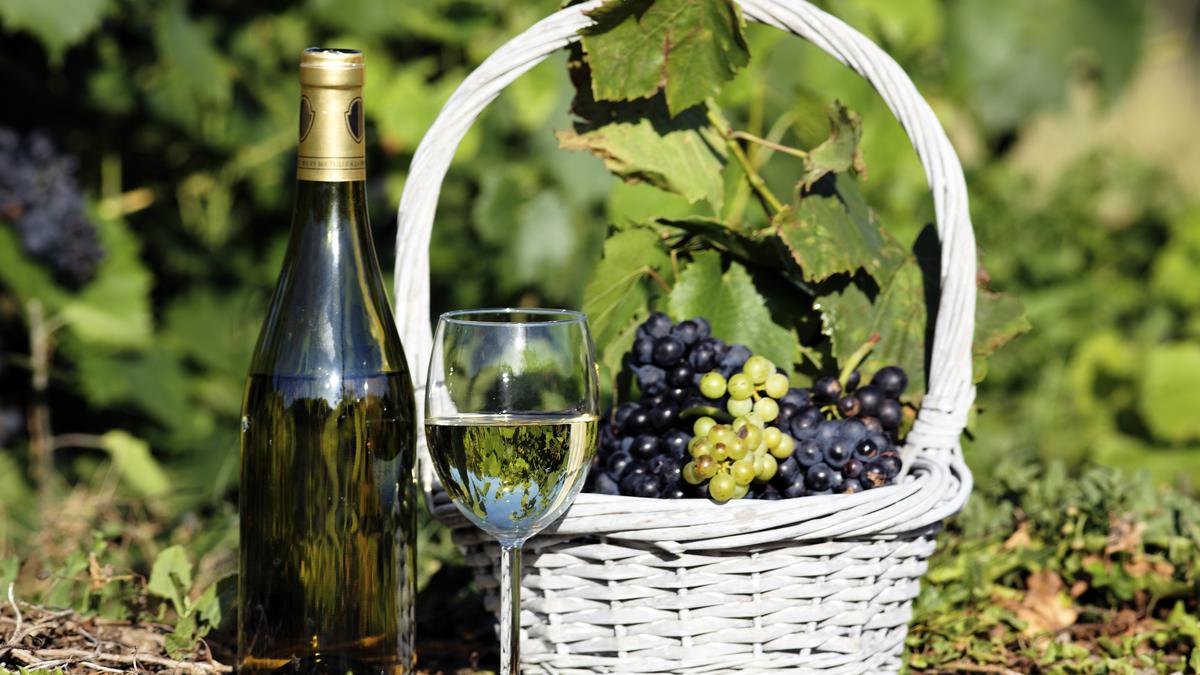
Tasting
It's like enjoying a work of art, a famous painting. Someone looks at it for a long time and thinks, and someone will look and pass by. Also with wine. One will immediately forget what he tried, and the other will remember the unique taste for a lifetime and will find a favorite drink.
Connoisseurs can already determine the grape variety from which the wine is made by taste.
Tasting is carried out at state-owned factories and private wineries, in stores, vinoteks andrestaurants.
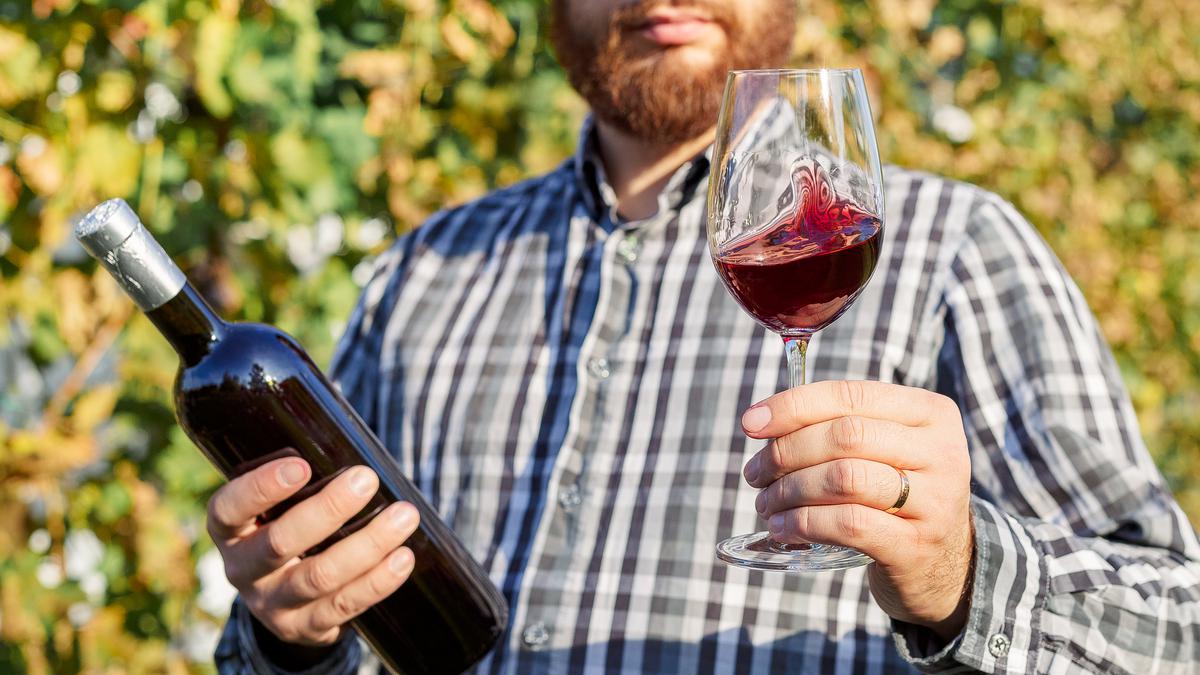
In Tbilisi
"Vinoteka" on K. Afkhazi street, 31 is located in the tourist area. The facade of the building is decorated with interesting inscriptions and collages. Unlike many other shops, they offer a good selection of wines for tasting. Sellers tell in detail about the grape varieties and the features of the drink.
"Wine Gallery" is a store on 39 Tsinamdzgvrishvili Street. It is often called a wine cellar, because part of the retail premises is located in the basement, where you can buy wine for bottling. It costs less than what is in beautiful bottles, but it tastes no worse.
A large store "8000 Vintages" with a good assortment of wines for tasting and buying is located on Abashidze Street, 60. Professional staff are always ready to prompt and help with the choice.
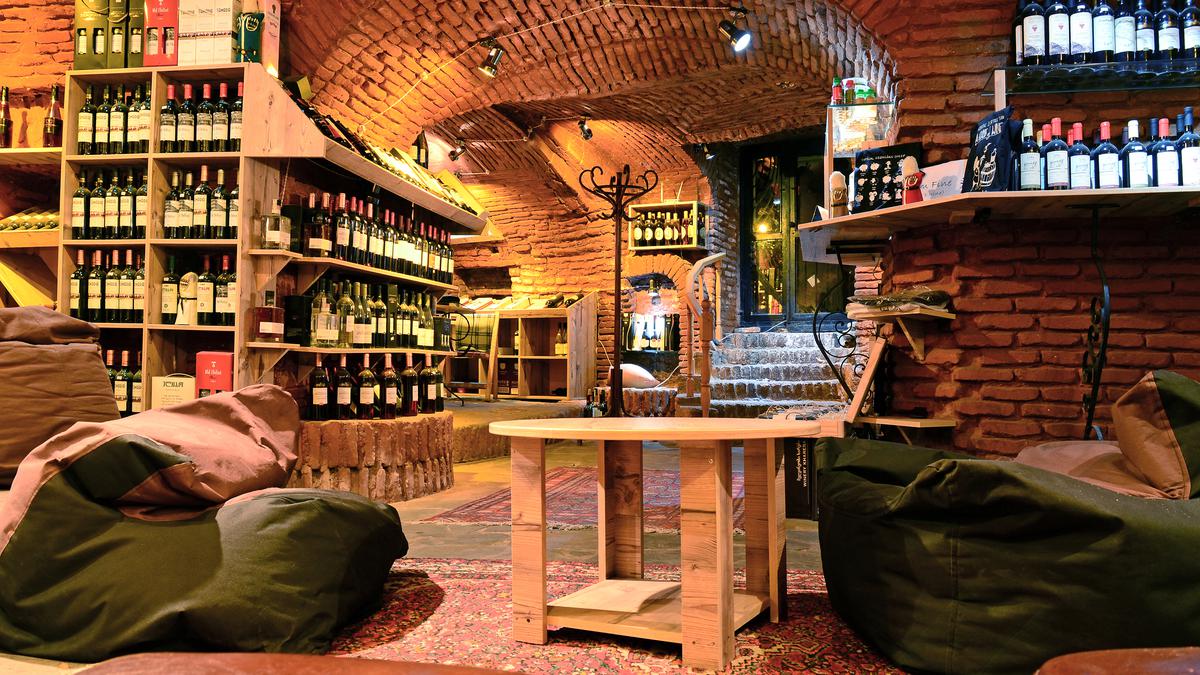
Заводы и винодельни Грузии
An elite place for tasting is the restaurant "Chateau-Mer" near the city of Telavi, or rather, it is a hotel-restaurant. It is better to come here with a company, stay for a few days at a hotel, get acquainted with the process of making wonderful drinks in more detail. Here you can try "Mukuzani" and "Kisi", cooked in kvevri. Ham, cheese, honey are served as an appetizer. There is a tasting with snacks from GEL 65. Aged (from five years) wines will cost more.
In the vicinity of Telavi there is also a wine farm "Shalauri". Semi-dry or dry Saperavi and other wines are prepared here in kvevri. The tasting costs 20-25 GEL per person. The surrounding landscapes contribute to a pleasant acquaintance with fine drinks. There is a Facebook page where you can clarify all questions in advance.
In Sighnaghi, it is worth visiting the winery of Joni Okruashvili. Here in kvevri they make Saperavi, Tsolikauri, Rkatsiteli, cider and other drinks. The products of the farm, also known as "Okro's Wines", can be found in the shops of Tbilisi. For tasting, chacha and three varieties of wine are offered, the cost is 20 lari. The farm has a restaurant.
The winery "Shumi" is located in the village of Tsinandali. The factory has an interesting museum, a visitor center for tourists, a good tasting room with an outdoor terrace, guided tours of the factory. 3-4 types of wines and snacks are offered for tasting, all this costs 15-20 GEL. You can try local port wine, "Tsinandali", "Mukuzani", "Kindzmarauli", "Khvanchkaru". Up—to-date information is available on the Facebook page.
One of the largest factories is Kindzmarauli Corporation in Kvareli (Kakheti). There are guided tours, during which experts talk about all stages of wine production, show new workshops with huge tanks, and kvevri buried in the ground. The tour costs 8 GEL, and tasting of four types of drink is free of charge. The factory has a shop with a good selection of wines and reasonable prices.
It is interesting to visit the Kvareli tunnel of the Khareba winery in Mount Kavkasioni. The excursion without tasting costs 7 GEL, with tasting of two types of drink — 12-15 GEL. If you want to taste four types of wine and chacha, take part in a master class and learn how to bake real Georgian bread, you will have to pay 40 lari.
An elevator goes from the tunnel, which lifts directly to the restaurant on the cliff, from where you can admire the Alazani Valley.
On the other side of Tbilisi, in the Mtskheta area, there are two interesting places for tasting.
The Chateau-Mukhrani winery in the village of Mukhrani is a small castle, a winery and vineyards. For a sample, high-quality drinks are offered, it costs about 40 lari.
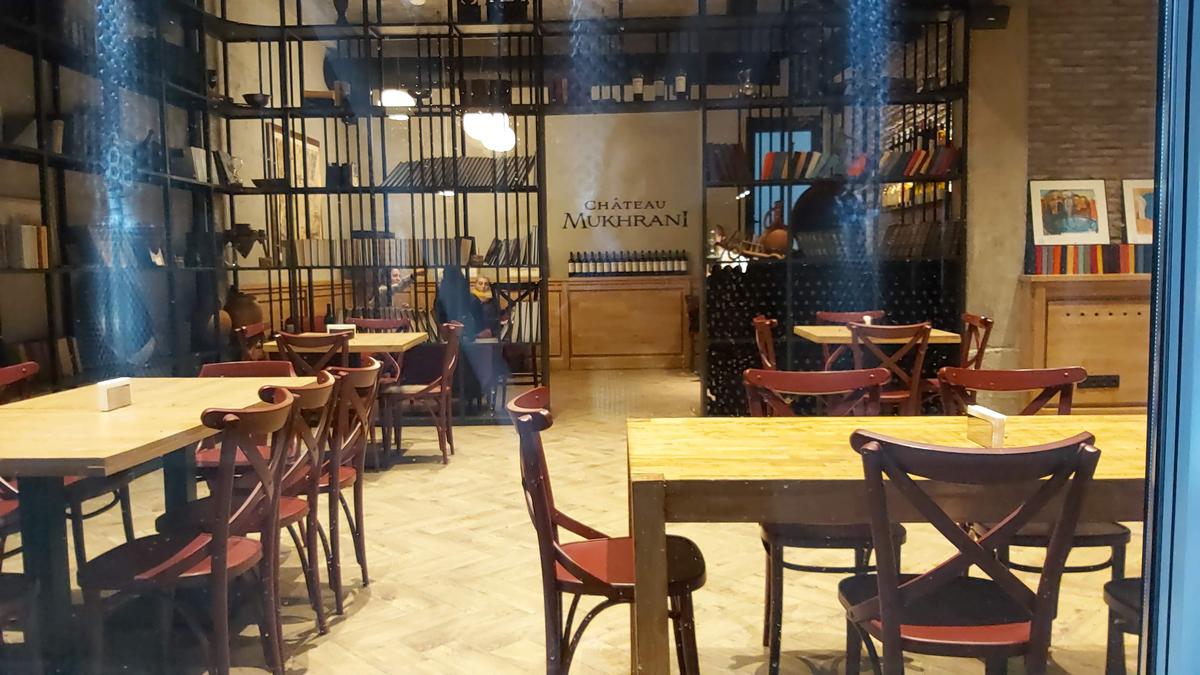
Chateau-Mukhrani wine studio has opened in the center of Tbilisi, on Maidan Square, where you can also taste wonderful drinks. Additional information can be found on the website.
The wine farm of Yago Bitarashvili is located in the village of Chardakhi, where rare white wines "Chinuri" and "Saperavi" are produced at home. Here you can try them, and have a snack with Georgian cuisine from a hospitable hostess. But you need to arrange a visit in advance, on the Facebook page.
It is impossible to say which Georgian wine is better, because the choice is simply huge: dry and semi-dry, sweet and semi-sweet, aged and young. In order to find something among a wide variety of wines that you will especially like and become your favorite, you need to try and find out.












41 comments
Log in to leave a comment
Хорошо, что все могут узнать из статьи об уникальных местах, где можно попробовать и купить лучшие грузинские вина, о популярных винодельнях, таких как "Шато-Мере" или "Корпорация Киндзмараули". Для путешественников, ценителей вина или просто любознательных читателей, данная статья представляет ценную информацию, позволяет лучше понять этот удивительный аспект грузинской жизни.
Грузинские вина, отзывы на которое я до этого слышал только положительные, оказались действительно удивительными. Я побывал в нескольких винодельнях и был поражен их традициями и техниками виноделия. Грузия - одна из первых стран в мире, начавших производство вина, и здесь вся эта старинная традиция до сих пор активно преследуется.
Виноделы Грузии используют метод, известный как квеври, для производства своих вин. Квеври - это глиняные амфоры, которые закапываются в землю и используются для ферментации и созревания вина. Это дает винам уникальные ароматы и вкусы, которые вы не найдете ни в одном другом вине.
Я имел возможность погрузиться в процесс создания грузинского вина, от посадки винограда до тщательного отбора и ручной сборки гроздей. Грузинские винодельни подчеркивают важность традиции и уважения к земле, и это чувствуется в каждой бутылке.
Но не только производство вина захватило мое сердце - грузинские винодельни олицетворяют теплоту и гостеприимство грузинского народа. Я встретил здесь множество страстных виноделов, готовых поделиться своими знаниями и приветствовать меня в своих винодельнях.
Так что, если вы - любитель вина, я настоятельно рекомендую посетить Грузию и окунуться в мир грузинских вин. Вы будете удивлены и восхищены их качеством и уникальностью. Прочувствуйте историю и страсть, которые находятся в каждой бутылке грузинского вина. Уверяю вас, это будет незабываемое путешествие!
При посещении различных винодельческих предприятий я погрузился в мир ароматов и вкусов, который является отражением географического разнообразия и традиций этой страны. Я узнал о традиционных методах производства вина, таких как использование квеври - аргиллитовых амфор, зарытых в землю, а также о древних сортах винограда, которые выращиваются в уникальных климатических условиях.
Среди всех удивительных винодельческих предприятий, которые я посетил в Грузии, особенно запомнилась одна винодельня в регионе Кахетии. Здесь меня встретила теплая атмосфера, гостеприимство и страсть к виноделию. Я узнал о многовековой истории семьи, производящей вино, и насладился дегустацией их лучших творений. Каждый глоток удивлял своими неповторимыми оттенками и характером, отражая гордость и умение мастеров создавать непревзойденные вина.
А какое винодельческое предприятие в Грузии произвело на вас наибольшее впечатление? Или, может быть, у вас есть советы по выбору лучших винных маршрутов для дегустации местных вин? Давайте разделим наши винные открытия и вдохновим других путешественников на исследование мира грузинского вина!
Статья очень подробная и познавательная. Наверное, не хватит жизни, чтобы попробовать все вина. С другой стороны не все вина лично мне подходят. Я больше люблю белые сухие и скорее всего буду пробовать в первую очерндь их. Заинтересовали "Крахуна" из-за редкого сорта винограда и "Ркацители" из-за терпкости, ну и потому что самое популярное вино, а это показатель.
в себя: историю виноделия, сам процесс приготовления вина, его виды , а также места, где можно это всё попробовать!